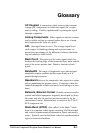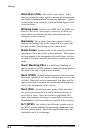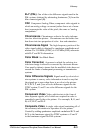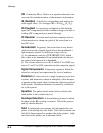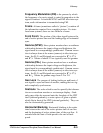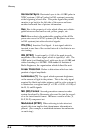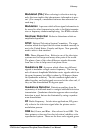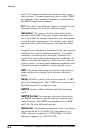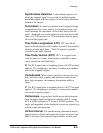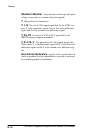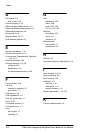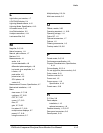
Glossary
G-8
1760 Series Component Waveform/Vector Monitor User Manual
ated by the camera and used by the picture monitor to pro-
duce a picture. The same signals may also be called “GBR”
as a reminder of the mechani cal sequence of connections in
the SMPTE interconnect standard.
R--Y One of the color difference signals is obtained by sub-
tracting luminance (Y) from the red camera signal.
Saturation The property of color which relates to the
amount of white light in the color. Highly saturated colors
are vivid, while less saturated colors have more white mixed
in and, therefore, appear pastel. For exam ple, red is highly
saturated, while pink is the same hue, but much less satura-
ted.
In signal terms, saturation is determined by the ratio between
luminance level and chrominance amplitude. It should be
noted that a vectorscope does not display saturation; the
length of the vectors re presents chrominance amplitude. In
order to verify that the saturation of the colors in a color bar
signal is correct, you must check luminance amplitudes with
a waveform monitor in addition to observing the vectors.
SCH The timing relationship between the horizontal sync
pulses and the zero crossings of the reference subcarrier
(burst).
Setup In NTSC systems, video black is typically 7.5 IRE
above the blanking level. This 7.5 IRE level is referred to as
the black setup level, or simply as setup.
SMPTE Society of Motion Picture and Television Engi-
neers.
SMPTE Format In component television, this refers to
the SMPTE standards for parallel analog component video
interconnection. The SMPTE has standardized both RGB
and Y, P
B
,P
R
color difference systems.
Subcarrier The modulation sidebands of the color subcar-
rier contain the R--Y (V) and B--Y (U) information. For
NTSC, subcarrier frequency is 3.579545 MHz. For PAL,
subcarrier frequency is 4,433,619.75 Hz.




